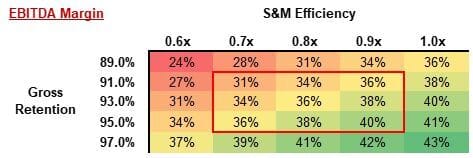- SHORTFUZE
- Posts
- How a SaaS business becomes profitable?
How a SaaS business becomes profitable?
Unit economics 101
In recent discussions with B2B SaaS investors and software founders, I've noticed many focus on benchmarking KPIs but lack deep understanding of unit economics. Most stumble upon a simple question: “how does a SaaS business becomes profitable?”. From my years with some of the best operators Tom Eggemeier and Dave Kellogg I've learned not to disregard the basics.
Most SaaS Companies we are seeing are unprofitable today – how can we underwrite cash-flow driven exit or how can we believe in a “we will be profitable in Q1 next year” without understanding long-term margin potential?
Long-term profit is driven by the renewal base. New business is generally unprofitable in the same year. But it becomes profitable once a customer passes the “CAC payback period”. The more a business “outgrows” its new business momentum – the more profitable it becomes. In a nutshell, margins naturally scale as ratio between new and total base decreases.
So what are the important levers to long term profitability?
COGS are variable and R&D and G&A scale predictably with growth. Scaling of S&M spend will be key to understand profitability potential, and more specifically retention rates and sales efficiency. The more you retain customers the faster the existing base will outgrow new momentum ; the more efficient S&M the lower the CAC payback period, the faster a customer becomes profitable.
In the long run, profitability of a subscription business is based on new sales efficiency and new sales as % of total ARR
